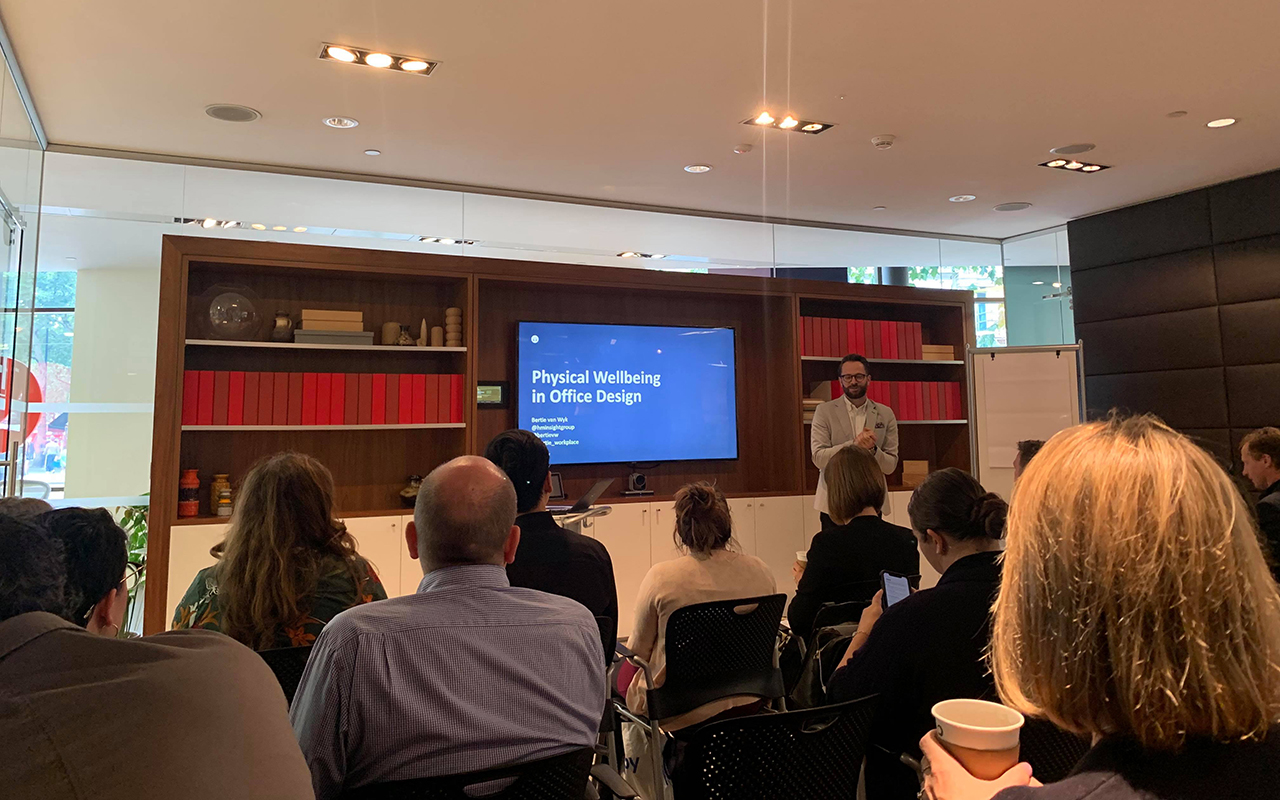Our account executive, Ollie, shares his thoughts after attending a seminar from the Herman Miller Insight Group on the need to prioritise physical wellbeing in office design.
You wouldn’t drive a car without adjusting the seat and steering wheel first, so why would you work an eight-hour day sat in the wrong position? That was the analogy Herman Miller’s Bertie van Wyk opened with in a seminar he led on physical ergonomics.
Keeping the audience on their toes (quite literally), van Wyk instructed everyone to stand up, keep their heads still, look up for 10 seconds, and then look down for 10 seconds. We agreed that holding our heads up was harder than looking down. van Wyk said this is because it puts more strain on a smaller muscle. Our larger muscles have to work harder to compensate for smaller ones, which has a knock-on effect to our body and, ultimately, our wellbeing.
Though it might seem hard to believe, van Wyk said that our perception of our surroundings can also impact our comfort. In one study where the same chair was tested on a focus group but in two different colours – one in a dull brown, and the other in a more vibrant hue – people found the brown chair less comfortable, he explained.
Talk then turned to ergonomics within office spaces. “There is absolutely no room for dictatorship within workplaces,” said van Wyk. “The office is a living system which needs to actively replicate what its users need, not what a manager thinks its employees would want.”
That led to some interesting debate on the benefits of sit-stand desks. By chance, a Herman Miller employee next door was using a high-top desk for cutting before sitting back down at their chair-height desk. “This perfectly demonstrates the importance of choice,” van Wyk noted. “Not only do you have to provide such variations of space and furnishings, but you have to help train and encourage them to engage with them too.” There is no point providing a space if you’re not going to help educate staff on why it benefits them.
Concluding the session, van Wyk provided some interesting stats to prove his points. A reent survey, for example, found that productivity can increase by 10% if workers are given the correct ergonomic furniture as well as training on how to use it. Moreover, the same survey found that, for every $1 spent, there is a $17.50 return from increased productivity and engagement.
So, considering all of the above points and figures, it would seem foolish for offices of today to not adapt to the growing importance of investing in workplace ergonomics and physical wellbeing.










